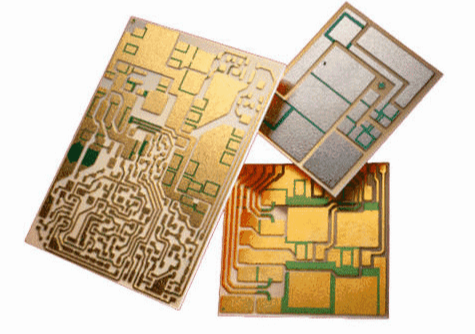Aluminum Nitride Ceramic-Based PCB The Core Driver of Next-Generation High-Power Electronics
With the rapid development of 5G communications, new energy vehicles, and aerospace technologies, the demand for high power density and efficient thermal management in electronic devices has become increasingly urgent. In this context, aluminum nitride ceramic-based PCB (hereafter referred to as AlN PCB), leveraging its unique material properties, is emerging as a critical technology in advanced electronics manufacturing. This article explores the future prospects of AlN PCB through three dimensions: technical principles, market trends, and industry challenges.

Ⅰ. Technical Superiority: Why Is AlN PCB a Focal Point?
Aluminum nitride ceramic-based PCB is a circuit board fabricated using aluminum nitride (AlN) ceramic as the substrate through thin- or thick-film processes. Its core advantages stem from the physical properties of aluminum nitride:
①Exceptional thermal conductivity (170–200 W/m·K), 7× higher than traditional alumina ceramic substrates (24 W/m·K), enabling rapid heat dissipation from high-power components;
②Low thermal expansion coefficient (4.5 ppm/°C), closely matching semiconductors like SiC and GaN, minimizing thermal stress-induced failures;
③Superior insulation (breakdown voltage ≥15 kV/mm), ensuring reliability in high-voltage applications.
For example, in new energy vehicles, every 10°C reduction in the operating temperature of motor control modules (e.g., IGBTs) can double their lifespan. AlN PCB-based thermal solutions can lower module temperatures by over 30°C (Source: Yole Développement, 2023), driving their adoption by automakers like Tesla and BYD.
Ⅱ. Market Growth: Data-Backed Explosive Potential
According to MarketsandMarkets, the global ceramic substrate market was valued at $6.8 billion in 2022, with aluminum nitride ceramic-based PCB accounting for ~18%. By 2028, its share is projected to rise to 32%, with a CAGR of 14.7% (Figure 1). Key growth drivers include:
①5G Base Stations & RF Devices: High-frequency signal processing demands extreme thermal performance, prompting Huawei and Ericsson to adopt AlN PCB in next-gen base stations;
②EV Power Systems: Global EV sales surpassed 14 million units in 2023, driving a 25%+ surge in AlN PCB demand for power modules;
③Aerospace & Defense: Satellite communications and radar systems require stability in extreme environments, where AlN PCB’s high-temperature resistance (>800°C) excels.
Ⅲ. Challenges & Breakthroughs: Collaborative Industry Solutions
Despite its promise, widespread adoption of aluminum nitride ceramic-based PCB faces two hurdles:
1. High Manufacturing Costs: AlN powder purity must exceed 99.9%, and complex sintering processes (>1800°C) make substrates 20–30× costlier than standard FR-4 materials;
2. Process Compatibility: Conventional PCB etching struggles with ceramic substrates, necessitating specialized techniques like laser drilling and DPC (Direct Plated Copper).
The industry is addressing these issues through:
Material Innovation: Toshiba and China’s Sanhuan Group have reduced raw material costs by 40% via optimized powder synthesis;
Advanced Manufacturing: Rogers Corporation’s Low-Temperature Co-Fired Ceramic (LTCC) technology enables multilayer AlN PCB production with >85% yield;
Application Integration: Tesla’s 4680 battery management system uses AlN PCB to boost thermal efficiency by 50% and reduce module size by 30%.
Ⅳ. Future Outlook: From Niche to Mainstream in a Decade
Driven by technological advances and market demand, aluminum nitride ceramic-based PCB is poised for two transformative leaps by 2030:
1. Cost Reduction: Economies of scale and recycling could slash prices to one-third of current levels, enabling entry into consumer electronics (e.g., high-end GPUs);
2. Performance Evolution: Nano-engineered AlN composites (e.g., AlN-SiC hybrid substrates) could achieve thermal conductivity >250 W/m·K, meeting future 6G terahertz-frequency requirements.
Notably, China is rapidly ascending in this field. Per MIIT data, the country contributed 35% of global AlN PCB capacity in 2023, projected to exceed 50% by 2025. This shift not only breaks Japan-U.S. monopolies but also accelerates the global transition toward high-efficiency, high-reliability electronics.
Conclusion
As an unsung hero of advanced electronics, aluminum nitride ceramic-based PCB embodies the triumph of materials science and industrial collaboration. Amid the dual waves of carbon neutrality and digitalization, this niche yet pivotal technology may well unlock a market worth hundreds of billions.
